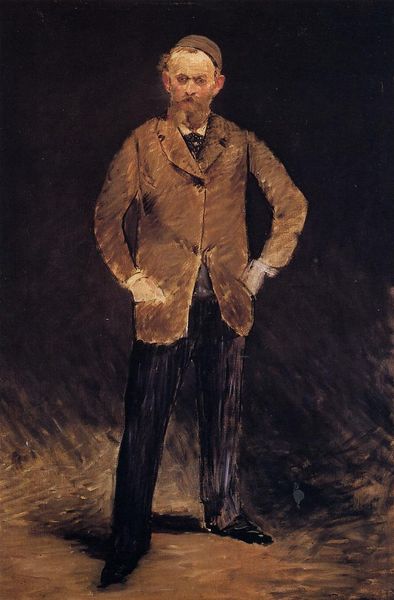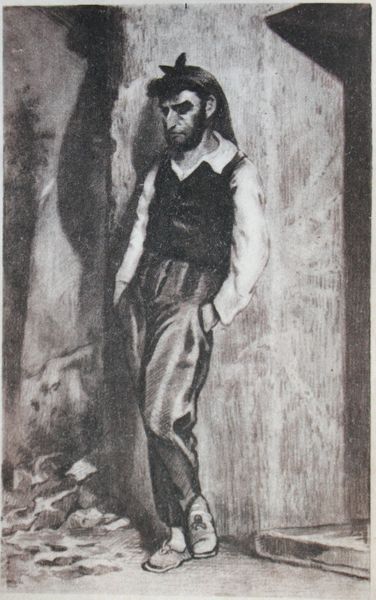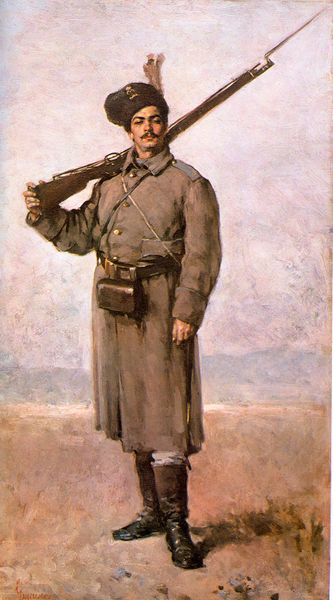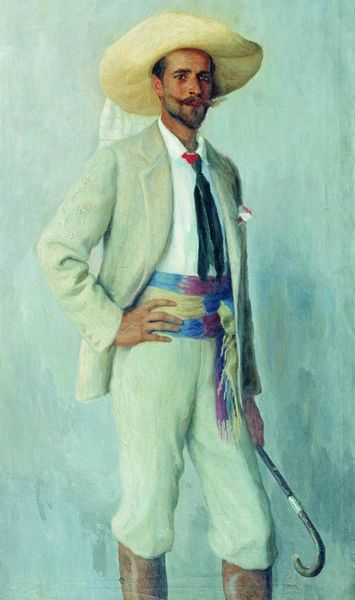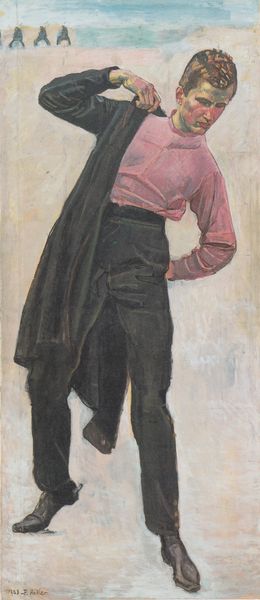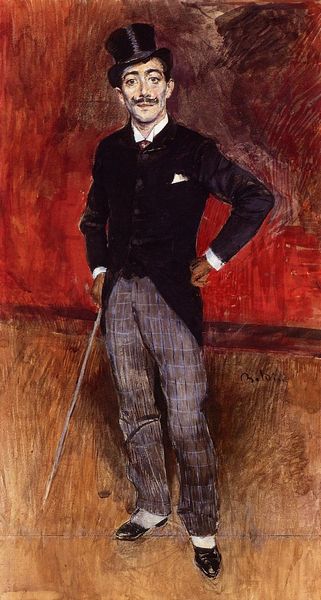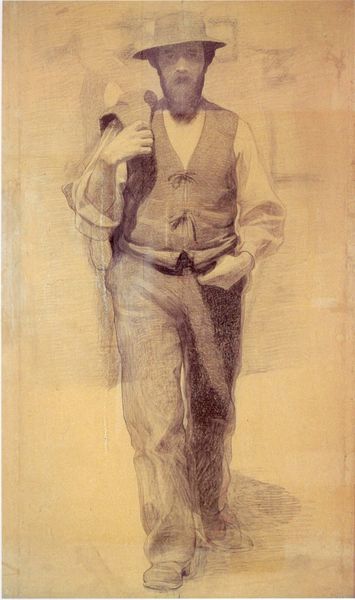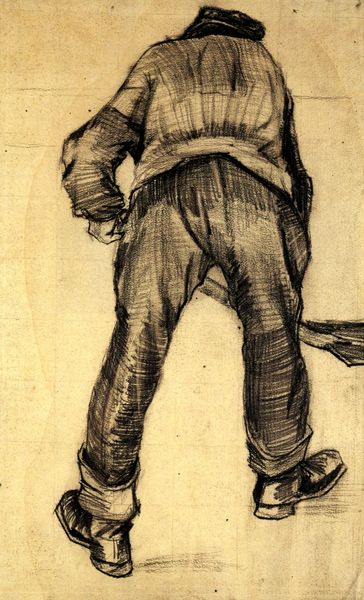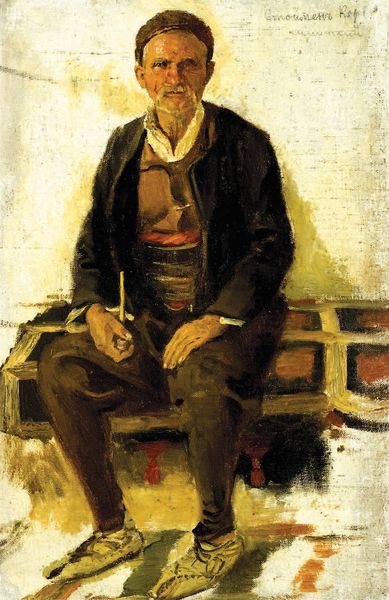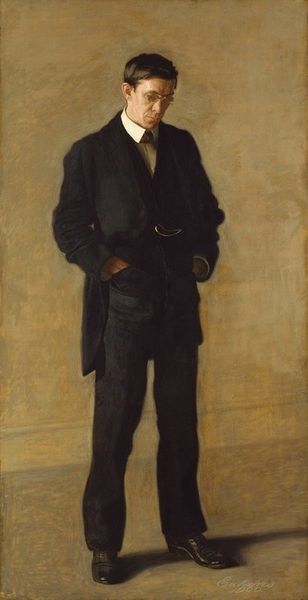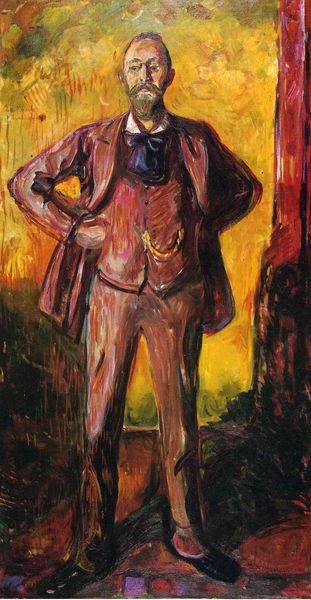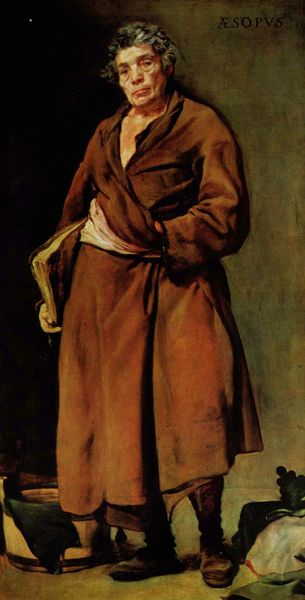
oil-paint
#
portrait
#
impressionism
#
oil-paint
#
landscape
#
figuration
#
oil painting
#
post-impressionism
Copyright: Public domain
Editor: So this is “Fisherman on the Beach,” painted by Van Gogh in 1882, using oil. It’s somber, wouldn’t you say? And kind of unsettling with the blank space where the face should be. What stands out to you? Curator: I notice first how the figure's stance and attire speak volumes about the harsh realities of labor and survival in the late 19th century. Consider how the absence of facial features affects your perception. What emotions arise when you confront a figure without a face? Editor: Definitely an uncomfortable empathy. Like I’m meant to project something there, perhaps? I hadn’t considered the facelessness as symbolic of the working class in general. Curator: Precisely! Van Gogh often used figures to represent larger societal truths. He might have meant to convey universality by obscuring the individual's identity. How does that understanding shift your experience of the artwork? Think about how he wanted the viewer to see this subject with empathy, beyond the superficial. Editor: That makes the scale of the boots much more significant; this isn’t an individual, it’s representative. I guess I see it as less of a portrait and more of an icon. Curator: Indeed. And by connecting to the working class on a human level, what is Van Gogh telling us about that time and the plight of this type of person, and humanity itself? Editor: I see a broader story about the lives of these people, and how it can apply to everyone. It's a powerful and unsettling image that lingers. Curator: Absolutely. The fisherman becomes a vessel, a mirror reflecting our shared human condition through his humble existence.
Comments
No comments
Be the first to comment and join the conversation on the ultimate creative platform.
